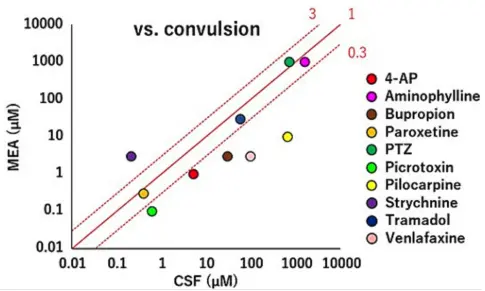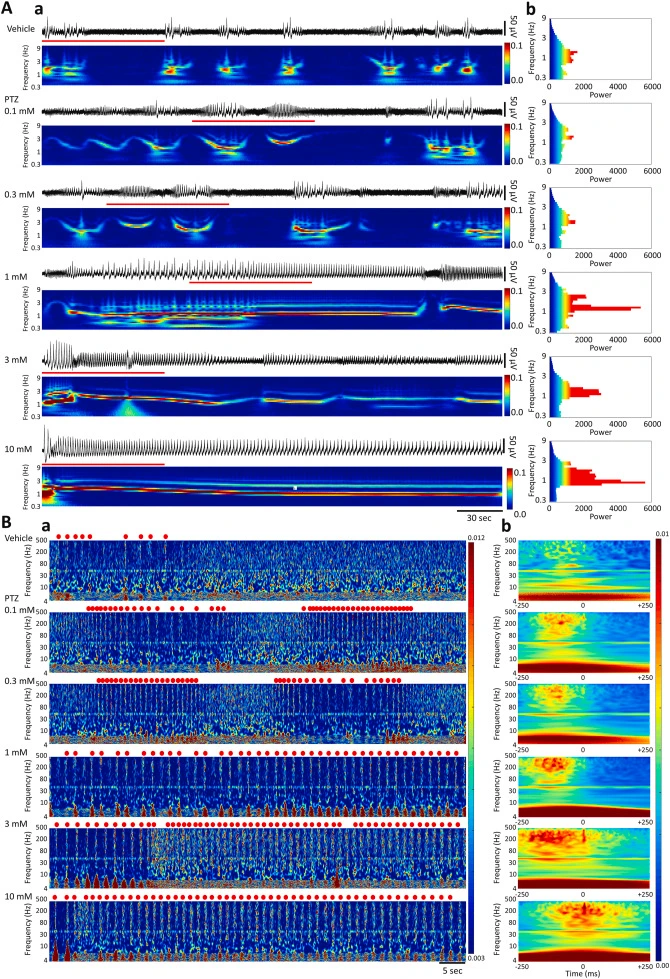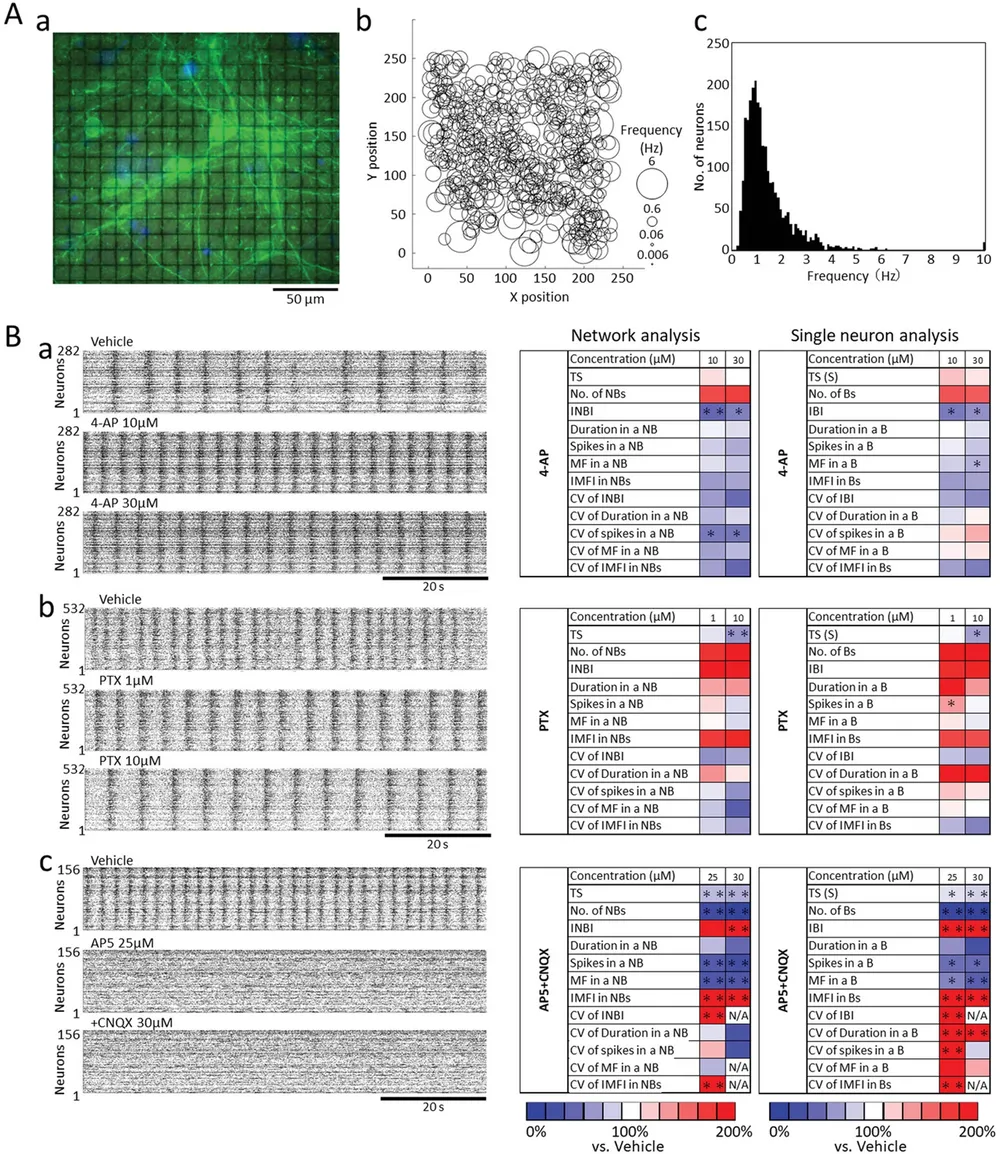Neurotoxicity
# Proactive Risk Assessment for Safer Drug Development
Predicting Neurotoxicity with Precision
Neurotoxicity is a critical aspect of drug development, ensuring that candidate compounds do not induce unintended effects on the central nervous system. Adverse CNS outcomes, such as seizures, cognitive impairment, or neurotoxicity, can derail clinical trials and result in significant delays. At VitroVo, we combine advanced MEA platforms, AI-driven analytics, and tailored models to deliver predictive, actionable insights that help de-risk your pipeline.
Why Neurotoxicity Profiling Matters
Unanticipated CNS effects can lead to regulatory hurdles and clinical failure. Early and accurate assessment of Neurotoxicity allows researchers to:
- Identify seizure liability and other functional risks.
- Reduce the likelihood of adverse events in clinical trials.
- Improve the overall success rate of drug development.
- Minimize reliance on animal testing with in-vitro assays that replicate human CNS function.
VitroVo’s Expertise in Neurotoxicity Assessment
State-of-the-Art Electrophysiology and Analytics:
MEA Technology:
- Measure neuronal excitability and network activity to predict CNS effects.
- Perform high-resolution analyses with HD-MEA platforms, capable of single-cell functional recording.
AI-Powered Safety Insights:
- Use machine learning algorithms to identify patterns and predict CNS-related risks.
- Multivariate analysis (e.g., PCA, UMAP) ensures comprehensive data interpretation.
Robust Safety Testing Across Key Parameters:
Seizure Liability:
- Determine pro-seizure potential and identify dose thresholds aligned with in vivo outcomes.
- Utilize well-established seizurogenic markers from electrophysiological data.
Neurotoxicity:
- Assess compound-induced damage to neurons and glial cells using validated assays.
- Measure synaptic activity and network stability for signs of functional impairment.
VitroVo’s Tailored Capabilities for Neurotoxicity Profiling
Advanced CNS Models:
- Human iPSC-Derived Neurons: Glutamatergic, GABAergic, and dopaminergic neurons offer comprehensive coverage of CNS functions.
- Brain Organoids and Slices:: Model complex 3D neural networks for realistic assessments of compound effects.
- Co-Culture Systems:: Investigate neuron-glia interactions to predict long-term CNS impacts.
Enhanced Assays for Comprehensive Profiling:
- Calcium Imaging: Monitor real-time intracellular calcium dynamics as a marker for neuronal excitability.
- Biomarker Analysis (ELISA): Detect CNS-specific biomarkers, including those linked to inflammation and stress responses.
- Gene Expression Profiling (RNA-seq, RT-qPCR): Study transcriptional changes to assess neurotoxicity and validate mechanistic pathways.
Why VitroVo is the Trusted Partner for Neurotoxicity
Benefits of Choosing VitroVo:
- Validated Predictive Models: Reduce uncertainty in drug safety with highly reliable in-vitro assays.
- Comprehensive Insights: Integrate data from MEA, imaging, and molecular profiling to ensure thorough CNS evaluations.
- Cost-Effective Solutions: Save time and resources by predicting CNS risks early in the drug discovery process.
Partner with VitroVo for Neurotoxicity Excellence
At VitroVo, we provide cutting-edge solutions for Neurotoxicity profiling, leveraging decades of expertise and innovative technologies. Whether you are screening for seizure liability or evaluating neurotoxic effects, our team can support your drug development needs with precision and efficiency.
Contact Us:
Discover how VitroVo can help you ensure the Neurotoxicity of your candidate compounds. Reach out to our team today!
Assays
See assay examples below to find out how VitroVo can advance your neurotoxicity research



